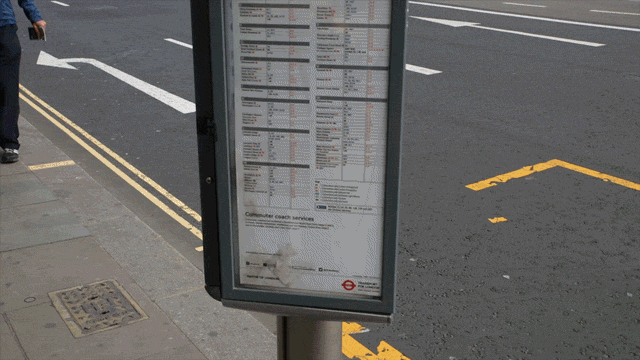Eye conditions such as glaucoma, cataract, macular degeneration and diabetic retinopathy affect thousands of people in the UK every year.
But if you've never been diagnosed with one of these conditions yourself, it can be difficult to imagine what living with restricted vision is really like.
To offer an insight into these problems, the team at Clinic Compare has created a series of graphics which replicate the experiences of sufferers.
Below, consultant ophthalmic surgeon and lecturer Valerie Saw explains why these graphics are sadly accurate reflections of what living with an eye condition is like.

"Glaucoma is an eye disease which results in permanent damage to the optic nerve," Saw told HuffPost UK Lifestyle.
"When any of the one million nerve cells is damaged, it does not regenerate, and is permanently impaired."
According to Saw, glaucoma is the second leading cause of blindness in the UK and the most common factor which damages the optic nerve is high pressure inside the eye.
"High pressure most commonly develops when drainage of fluid from the eye is impaired," she said. "There is often a genetic predisposition to poor fluid drainage from the eye."
She explained that glaucoma is a "silent" cause of blindness because it does not cause pain and the damage to the nerve cells leads to loss of peripheral vision first. This is known as tunnel vision.
"This video shows how tunnel vision restricts the field of view of someone suffering from glaucoma," she said.

"Cataract is clouding and opacification of the natural crystalline lens inside the eye. It is most commonly due to ageing, but steroid medication, diabetes and ocular surgery can make cataract develop earlier in life," Saw said.
This cloudiness prevents light from passing clearly through the lens, which causes vision to be blurred when a person is looking straight ahead.
"Cataract can also cause symptoms of glare in bright lights, reduced contrast sensitivity and colours appearing faded," she added.
"This video simulates the blurriness of vision typically caused by cataract."

"Diabetic retinopathy is disease of the retina, that occurs in patients with diabetes. The retina is the layer of nerve cells that lines the back of your eye," Saw explained.
"Many people with diabetes get retinopathy, particularly if they have had diabetes for many years."
According to Saw, diabetes causes two main problems in the retina.
"It makes blood vessels in the retina weak, so that they leak fluid. The fluid causes dysfunction of the retinal nerve cells and causes a blurry image," she said.
"Plus it causes lack of oxygen to the retina. This can lead to abnormal growth of new blood vessels which try to supply oxygen, but are fragile and bleed easily.
"Both lack of oxygen to the retina, and bleeding on the retina, cause damage to the retinal nerve cells, which can be permanent."
People suffering from diabetic retinopathy have patchy vision where the retinal nerve cells are not functioning, which is demonstrated in the graphic.

Age Related Macular Degeneration (ARMD) is an eye disease that affects the macula.
"The macula is the tiny part of the retina which is very important for reading, especially reading small details, and for seeing things in the centre, directly in front of you," Saw explained.
"ARMD is due to ageing of the macula and is most often seen in people older than 65, although it can develop in younger people."
According to Saw, there are two types of ARMD which have different treatments.
"In one type (wet ARMD), abnormal leaky blood vessels grow in the macula which can bleed and cause permanent loss of vision in the centre of the field of view," she said.
"The other type of ARMD (dry ARMD) is a slower process of atrophy and loss of function of the nerve cells in the macula."
In both types of ARMD, people experience blurriness and loss of sight in the centre of their vision, directly in front of them.
They also have difficulty reading and seeing fine detail, which is demonstrated in the above graphic.